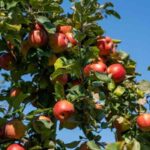Creating a wildlife-friendly garden
Gardening isn’t just about planting pretty flowers or growing your vegetables. It is also an opportunity to create a haven for local wildlife. A wildlife-friendly garden invites various birds, insects, small mammals, and even amphibians into your outdoor space, helping to maintain the balance of the local ecosystem. If you’re passionate about supporting biodiversity, there are several ways you can turn your garden into a welcoming environment for wildlife, Let’s consider the steps you can take to achieve this.
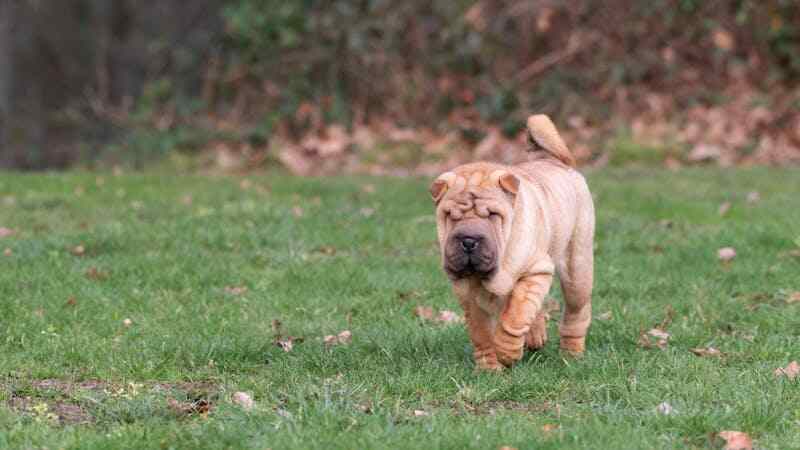
Introduction
Are you ready to transform your garden into a thriving ecosystem that welcomes and supports wildlife? Creating a wildlife-friendly garden is an exciting journey that benefits your local environment and the creatures inhabiting it. With just a few thoughtful adjustments, you can turn your outdoor space into a haven for birds, bees, butterflies, and even small mammals. Let’s explore why and how to create a garden that is full of life.
Why Create a Wildlife-Friendly Garden?
Wildlife plays an important role in our environment. From pollination to pest control, animals and insects keep ecosystems in balance. Unfortunately, habitat loss due to urban development and agriculture has made it difficult for wildlife to thrive.
By creating a wildlife-friendly garden, you support native species, ensuring they have food, shelter, and a place to live. Plus, having wildlife in your garden enhances your experience as a gardener—there’s nothing like watching birds flutter between branches or bees buzzing happily among your flowers.
Planning Your Wildlife Garden
Before you begin, it’s important to plan your garden with wildlife in mind. Focus on creating a space that offers a variety of food, water, and shelter options to support different species throughout the year.
Provide food sources such as nectar, seeds, and berries. Add water features such as birdbaths or other habitats such as shrubs, trees, and logs to offer an important drinking source. Add piles of them to provide shelters and nests for wildlife, and your garden will become a thriving, year-round haven for birds, insects, and other creatures.
Selection of native plants
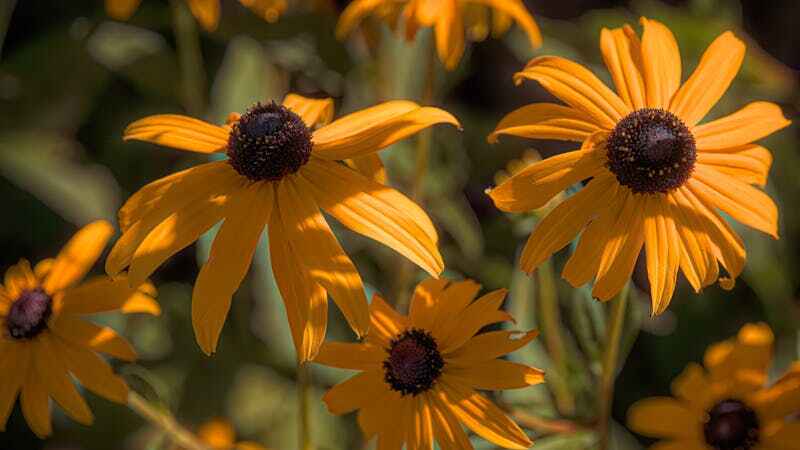
Choosing native plants is critical to creating a wildlife-friendly garden because they naturally adapt to the local environment and wildlife. These plants offer excellent sources of food and shelter for native species, supporting ecosystems that have evolved together over time.
Native flowering plants, for example, will attract native pollinators such as bees and butterflies, contributing to ecosystem health. Additionally, native trees and shrubs provide essential nesting and shelter for birds and small animals. By choosing plants native to your region, you ensure a thriving, low-maintenance garden that benefits local wildlife.
Designing for diversity
A diverse garden design creates a more welcoming habitat for a wider range of species. By adding different plant layers such as ground cover, shrubs, and trees, you mimic natural habitats and provide shelter for a variety of wildlife.
A mix of flowering plants, evergreens, and even dead wood or logs can provide homes for insects, birds, and small mammals, increasing biodiversity. A variety of plant species ensures that your garden supports wildlife throughout the year. In turn, this variety attracts species from pollinators to predators, which promotes a balanced and thriving ecosystem.
Key Features of a Wildlife-Friendly Garden.
Adding certain features to your garden is important to make it more welcoming to wildlife here are a few essential components to have, A water source, such as a small pond or bird bath, is essential for drinking and bathing, especially for birds and amphibians.
Dense shrubs and trees provide shelter, nesting sites, and protection for animals such as birds and small mammals. Including native plants that produce nectar, seeds and berries, ensures food for pollinators, birds, and insects.
Deadwood, leaf piles, and rock piles create safe hiding places and habitats for insects, amphibians, and small creatures. Avoiding pesticides and harmful chemicals protects the delicate balance of your garden’s ecosystem.
Water sources

All animals need water to survive, so adding a water source is important. A small pond or simple bird bath can make a big difference. Ponds, in particular, can attract amphibians such as frogs and newts, while birdbaths encourage frequent bird visits.
Water features also benefit insects such as dragonflies, which rely on ponds to breed. A shallow edge in ponds allows small animals such as bees to safely access the water without drowning. By keeping water clean and unfrozen in the winter, you can ensure that wildlife has access to a consistent source of water year-round.
Shelters and nesting areas

Wildlife needs places to hide, sleep, and raise their young. You can create shelters by adding birdhouses, bat boxes, or hedgehog homes. Simple log piles or thick bushes can provide excellent cover for smaller animals.
Building natural shelters such as rock piles or thick bushes can also protect wildlife from predators and harsh weather. Trees and hedgerows serve as nesting sites for birds and mammals, offering safe places to raise their young. Providing a variety of shelters in your garden supports different species, ensuring a diverse and thriving ecosystem.
Creating a habitat for birds
Birds bring color and life to any garden, and making your garden bird-friendly is easy with a few thoughtful additions. To attract birds, you can plant native trees and shrubs that provide food, such as berries and seeds.
Adding bird feeders and water sources, such as birdbaths, will encourage frequent visits and help birds thrive. Offering nesting boxes also creates safe places for birds to raise their young, making your garden a welcoming haven for a variety of species.
Bird feeders and bird baths

Bird feeders filled with seeds, nuts, and suet are great for attracting a variety of native birds to your garden. They provide an essential source of food, especially during the colder months when natural resources are scarce. Pairing a feeder with a birdbath adds to the appeal by offering birds a place to drink and bathe, making for a great birding spot.
A well-maintained bird bath also helps birds maintain their feathers, which are important for flight and insulation. Be sure to clean feeders and birdbaths regularly to prevent disease and keep birds healthy. Together, these features can transform your garden into a vibrant hub of bird activity.
Plants that attract birds
Choose plants that provide food sources such as berries, seeds, and nectar to naturally attract birds to your garden. Shrubs such as holly and viburnum provide birds with nutritious berries, while native flowers such as sunflowers, coneflowers, and honeysuckle are rich in seeds and nectar.
These plants not only nourish the birds but also make nests and shelters for them. Birds are attracted to a variety of plant species that bloom at different times of the year, ensuring year-round activity in your garden. By integrating these plants, you’ll support native bird populations while adding to the beauty and biodiversity of your garden
Encouraging pollinators
Pollinators, such as bees and butterflies, play an important role in a wildlife-friendly garden by helping plants reproduce through pollination. As they move from flower to flower, they transfer pollen, which allows plants to produce fruits and seeds.
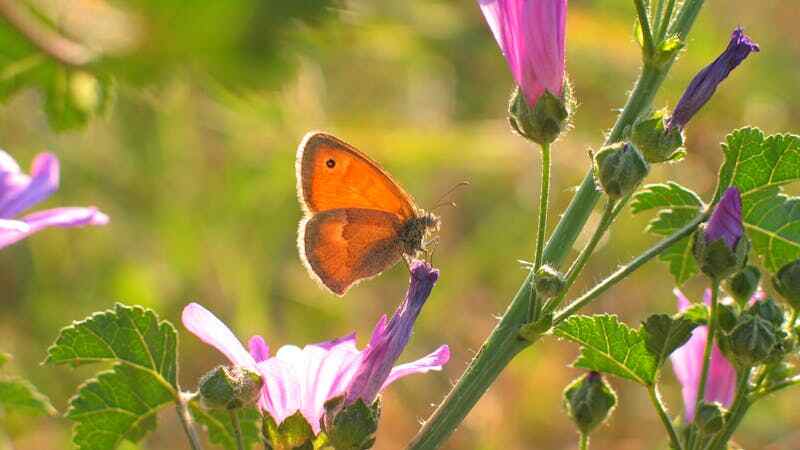

To attract these essential creatures, consider planting a variety of nectar-rich flowers such as lavender, daisies, or wildflowers. Native plants are particularly effective in supporting native pollinator populations. Providing shelter and water sources for pollinators further improves their habitat, encouraging their growth. By cultivating a pollinator-friendly garden, you contribute to a balanced and productive ecosystem.
Why are pollinators important?
Pollinators are critical to the reproduction of many plants, including those that humans rely on for food, such as fruits, vegetables, and nuts. Without them, many plant species would struggle to reproduce, leading to a loss of biodiversity and food. By creating a garden that supports bees, butterflies and other pollinators, you help ensure the survival of these plants.
Pollinators also contribute to overall ecosystem health by supporting plant diversity. A healthy pollinator population promotes more plant growth, which in turn benefits other wildlife. Pollinator support is essential for both natural ecosystems and agricultural production.
Flowers that attract bees and butterflies
Brightly colored flowers with open petals are especially attractive to bees and butterflies. These flowers provide easy access to nectar and pollen for pollinators, making them a favorite in the wildlife garden. Plants like lavender, echinacea, and daisies are great choices for drawing bees and butterflies because of their rich nectar and vibrant colors.
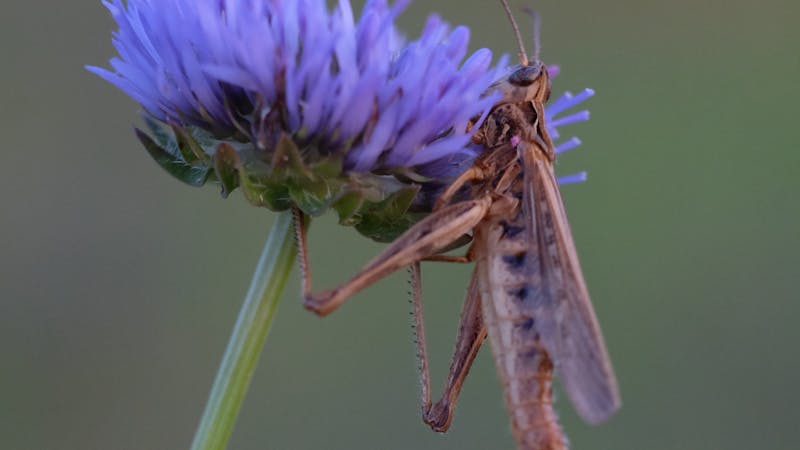
Native wildflowers are also effective in supporting native pollinator species. By planting a variety of these flowers, you can ensure year-round food for pollinators. A diverse selection of flowers helps maintain a healthy and thriving pollinator population in your garden.
Building a home for small mammals
Small mammals such as hedgehogs, squirrels, and rabbits can play an important role in the balance of the garden ecosystem. To create a welcoming place for them, provide natural shelters such as log piles, thick bushes, and ground cover where they can nest and hide. Leave small areas of the garden undisturbed so that these animals can safely forage for food.
Offering water sources and planting native plants that produce nuts, berries, and seeds will also attract small mammals. Avoid using harmful chemicals or pesticides, which can be dangerous to these creatures. By creating a habitat for small mammals, you support a diverse and active garden ecosystem:
Hedgehog houses
Hedgehogs thrive in small, sheltered enclosures, making hedgehog houses a great addition to a wildlife garden. You can buy a ready-made hedgehog house or build one using logs, twigs, and other natural materials. These cozy houses provide a safe place for hedgehogs to nest and hibernate. Placing the house in a quiet, shady area of the garden will encourage hedgehogs to stay there.
Stack for smaller creatures.
A simple pile of logs in a quiet corner makes an ideal habitat for insects, amphibians, and small mammals. Over time, the logs will naturally decompose, enriching your soil with valuable nutrients. This habitat supports biodiversity, attracting creatures that contribute to a healthy garden ecosystem. This is an easy and effective way to increase wildlife in your garden.
Importance of deadwood and leaves
Deadwood and fallen leaves are essential components of a wildlife-friendly garden, providing food and shelter for many creatures. As they decompose, they create habitats for insects, fungi, and microorganisms, which play an important role in the health of your garden.
Small mammals, birds, and amphibians also take advantage of these natural materials as nesting or foraging sites. Leaving piles of dead wood and leaves in unprotected areas helps to increase biodiversity. This simple step supports a wide range of species and promotes a balanced ecosystem. Additionally, decomposing material enriches the soil, improving plant health.
Making piles of leaves
Instead of discarding fallen leaves, collect them in piles to provide a haven for insects, amphibians, and small mammals, especially during the colder months. Leaf piles provide warmth and protection from predators and harsh weather conditions.
They also create a rich microhabitat where insects can lay eggs and overwinter. As the leaves break down, they naturally fertilize the soil. By keeping piles of leaves in your garden, you help maintain a healthy ecosystem. This simple process also reduces the need for artificial fertilizers
Log and rock piles
Building logs and rock piles in your garden provides excellent hiding places for insects, amphibians and small mammals. These structures mimic natural habitats, providing shelter from predators and extreme weather. The creatures sheltering in these piles are important to your garden’s food chain, serving as prey for larger animals and helping to balance the ecosystem.
Over time, as logs decompose, they contribute to soil fertility, benefiting plants. Log and rock piles are low-maintenance additions that significantly boost biodiversity. They create the micro-environments necessary for the survival of various species.
Avoid harmful chemicals
Using harmful chemicals in your garden can disrupt the natural balance and harm beneficial wildlife. Pesticides and herbicides may target unwanted pests, but they also pose serious risks to birds, bees, and other organisms that contribute to a healthy ecosystem.
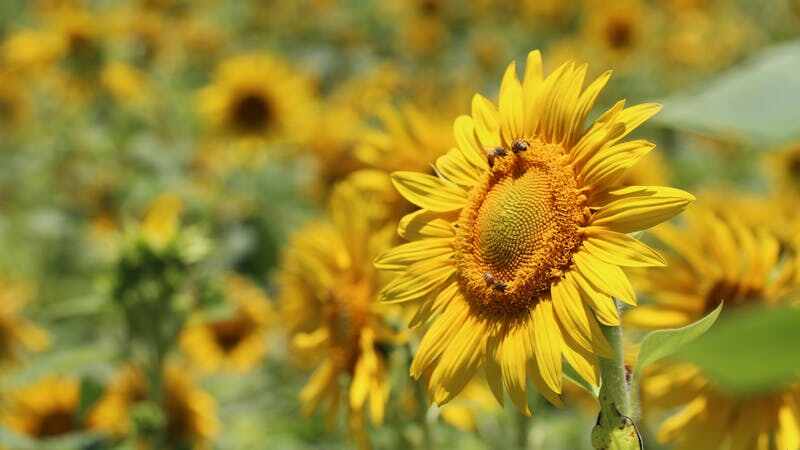
By avoiding these chemicals, you ensure that your garden remains a safe haven for wildlife. Toxic substances can harm pollinators and natural predators, reducing biodiversity. Keeping your garden free of chemicals supports the long-term health of both plants and animals.
Pesticides and herbicides
Although pesticides and herbicides can help eliminate unwanted pests, they often harm birds, bees, and other beneficial wildlife. These substances disrupt the food chain and can lead to the decline of important pollinators and natural predators.
Using them in a wildlife-friendly garden negates your efforts to create a thriving, balanced ecosystem. Excessive use of these chemicals can also pollute soil and water. Finding safe, natural alternatives is important to protect your garden and its inhabitants. A wildlife-friendly garden should rely on practices that help its ecosystem rather than harm it.
Eco-friendly alternatives
Instead of using harmful chemicals, opt for natural pest control methods to maintain a wildlife-friendly garden. Introducing beneficial insects such as ladybugs, which feed on aphids, can keep pest populations under control without harming the ecosystem. Companion planting — grouping some plants — can also help deter harmful insects.
For example, marigolds can repel insects from vegetable crops. Mulching and crop rotation are additional eco-friendly methods to reduce the need for chemicals. These alternatives support biodiversity while keeping your garden healthy and productive.
Fertilizers and Mulching for Soil Health
Composting kitchen scraps and using mulch are great ways to naturally enrich your garden soil. These practices improve soil fertility, encouraging algae and beneficial microorganisms to thrive.
Mulching also helps retain moisture, regulate soil temperature, and suppress weeds. By naturally enhancing soil health, you create a more productive environment for both plants and wildlife.
Creating wildlife corridors
Connecting your garden to neighboring wildlife-friendly areas creates wildlife corridors, allowing animals to move safely between habitats. This extended area increases the opportunities for birds, insects, and small mammals to find food, shelter, and mates.
Wildlife corridors promote biodiversity and help animals escape urban barriers. It’s a collaborative way to support wildlife in multiple gardens.
Attracting amphibians and reptiles
Adding ponds, rock piles, and shady, cool spots to your garden can attract reptiles like frogs and toads, as well as reptiles like lizards. These features provide shelter, breeding grounds, and water sources, creating a safe environment for these creatures.
Amphibians and reptiles are beneficial because they help control pest populations. Encouraging them increases the overall biodiversity of your garden.
Garden lighting and its effects on wildlife
Excessive artificial light can disturb nocturnal animals, such as bats and insects, by disrupting their natural behaviors. To reduce the impact, choose low-impact garden lighting or turn off lights at night. Reducing light pollution helps maintain the natural environment, allowing wildlife to function undisturbed. Creating deep areas in your garden supports a healthy ecosystem for nocturnal species.
Maintaining a wildlife-friendly garden throughout the year
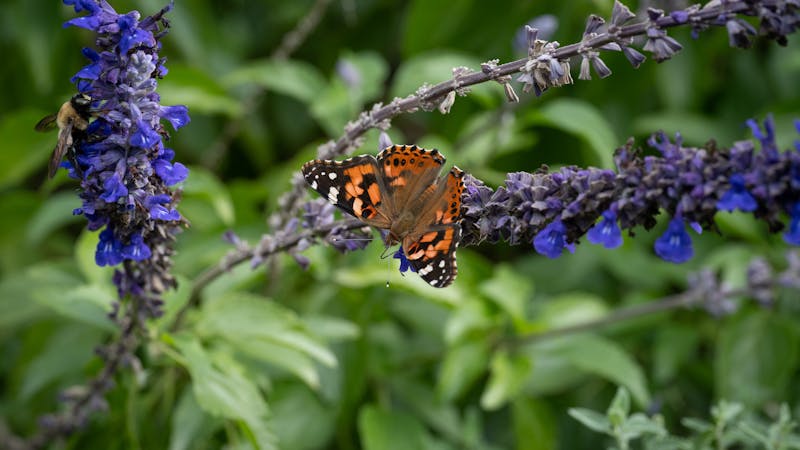
Wildlife needs support year-round, so be sure to leave seed heads on plants during the winter, fill bird feeders, and prevent water sources from freezing. These actions help animals survive the cold months when food and water are scarce.
Maintain a variety of plants that bloom in different seasons to provide a continuous food source. By tending to your garden throughout the seasons, you ensure that it remains a thriving habitat for wildlife.
Conclusion
By taking these thoughtful steps, you can turn your garden into a haven for wildlife, supporting a wide variety of species from birds and insects to small mammals and amphibians. Creating habitats with native plants, adding water features, and providing shelter helps native wildlife thrive while strengthening the overall ecosystem.
Avoiding harmful chemicals and adopting eco-friendly practices will ensure that your garden is a safe and sustainable environment. In return, you’ll see the beauty and vibrancy of nature up close, enhancing your outdoor experience.
Your efforts will not only support biodiversity but also create a peaceful and lively place where you can connect with the natural world. A wildlife-friendly garden is a worthwhile project that benefits both you and the creatures that visit. By adopting this approach, you contribute to a healthier planet, one garden at a time.
FAQs 1. What are the benefits of creating a wildlife-friendly garden?
A wildlife-friendly garden supports biodiversity by attracting beneficial animals such as birds, insects, and small mammals. It helps maintain local ecosystems, contributing to a healthy environment.
2. How can I bring birds to my garden?
You can attract birds by providing bird feeders filled with seeds, installing birdbaths for drinking and bathing, and planting native shrubs that produce seeds and berries. Providing shelter through trees and dense vegetation also helps.
3. What types of plants are best for a wildlife-friendly garden?
Native plants are a great choice for a wildlife-friendly garden because they offer food, shelter, and nesting sites for native wildlife. These plants also require less maintenance and adapt well to the environment.
4. How can I attract pollinators like bees and butterflies?
Plant a variety of brightly colored, nectar-rich flowers with open petals, such as lavender, echinacea, and daisies. These flowers provide easy access to nectar and pollen, supporting pollinators throughout the year.
5. How can I maintain a wildlife-friendly garden year-round?
To support wildlife year-round, leave seed heads on plants over winter, provide food at feeders, and prevent water from freezing. Ensure a diverse mix of plants that bloom in different seasons to offer a consistent food source


